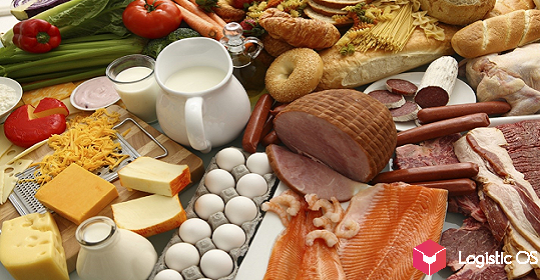According to him, in the next 9 years, the production of products in the world should develop intensively in order to keep up with the growing demand.
This forecast was published by the Food and Agriculture Organization of the United Nations together with the Organization for Economic Cooperation and Development.
According to experts, the agricultural sector has been developing steadily over the past years, but the pandemic has become the factor that has thrown it back.
Over the next few years, we can expect an increase in food consumption around the world, on average by 1.2% per year (while other experts indicate a value of up to 2%).
In this regard, manufacturers also need to increase their pace in order to keep up with the growing demand of humanity for products.
The main driver of growth, analysts believe, should be an intensive path of development, that is, an increase in yields and productivity. Under this condition, there is a chance that the agricultural sector will cope with the challenges it faces.
While the outlook to 2030 is generally positive and based on the fact that manufacturers have every chance of keeping pace with growing demand, the authors acknowledge that there are many uncertainties behind it.
The implementation of the optimistic scenario is possible only if the geopolitical and epidemiological situation around the globe is acceptable, as well as the weather conditions.
Will the agricultural sector develop in the Russian Federation?
Russia is one of the key players in the global food market. The development of the Russian agro-industrial complex has a number of specific features.
First, there is a low level of efficiency . Until now, manual labor is widely used, extensive development (plowing of new fields), while the yield per hectare, the level of digitalization and automation still leave much to be desired.
Secondly, the growth in demand for grain within the country . Before the pandemic, this demand declined in favor of meat and dairy products. Now (including due to the fall in incomes of the population due to the pandemic), the demand for grain starts to grow again, and for livestock products — to fall slightly.
Finally, the Russian agro-industrial complex is very susceptible to market conditions. These include international sanctions, sharp fluctuations in the ruble exchange rate, and export duties imposed by the Russian government. All these are factors that are difficult to predict, which, however, strongly influence Russian manufacturers.
In general, experts believe that Russian farmers have all the conditions for growth.
“On the horizon of ten years, all sectors of the Russian agro-industrial complex will have the potential to increase productivity. At the same time, in the cattle segment, due to the increase in the share of beef and cross-breed livestock, starting from about 2023-2024, production growth will be supported by an increase in livestock, ”says Lidia Ilyushina, head of the Agricultural Economics Department of the Vnesheconombank Institute.
Therefore, Russia has every chance to at least maintain its own food security, and at the most, to occupy a significant part of the world food market in the future.

